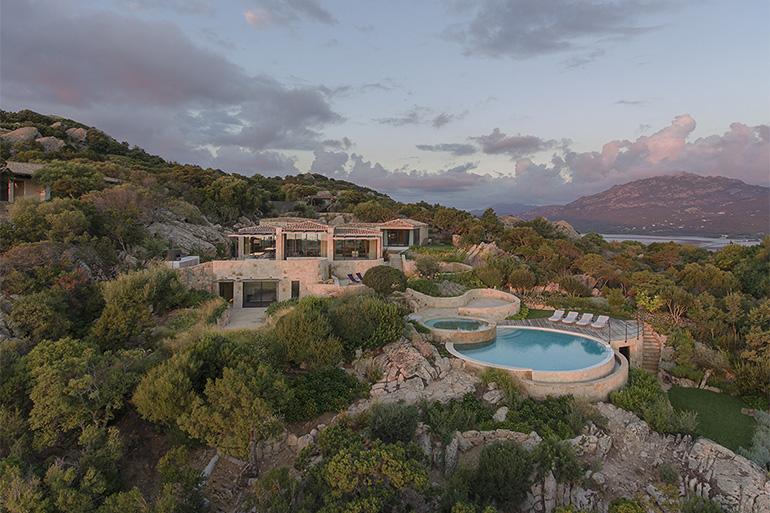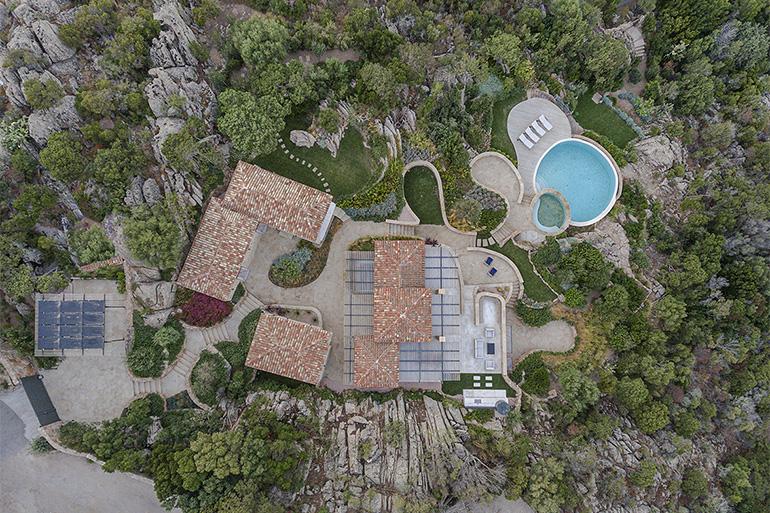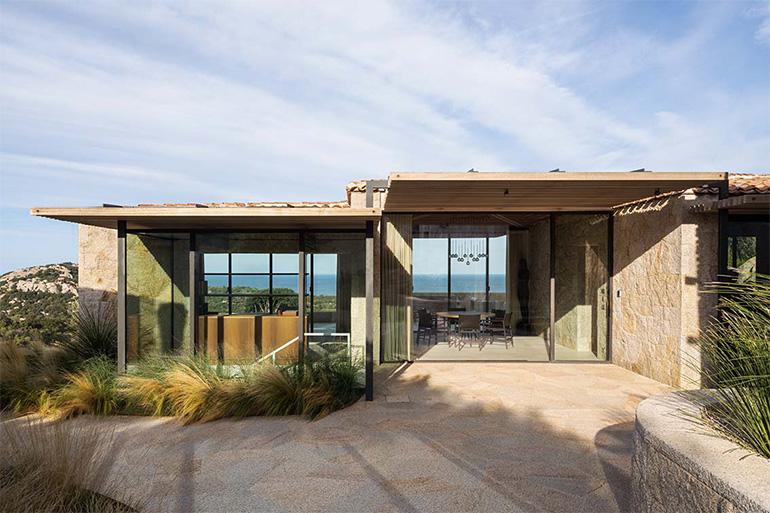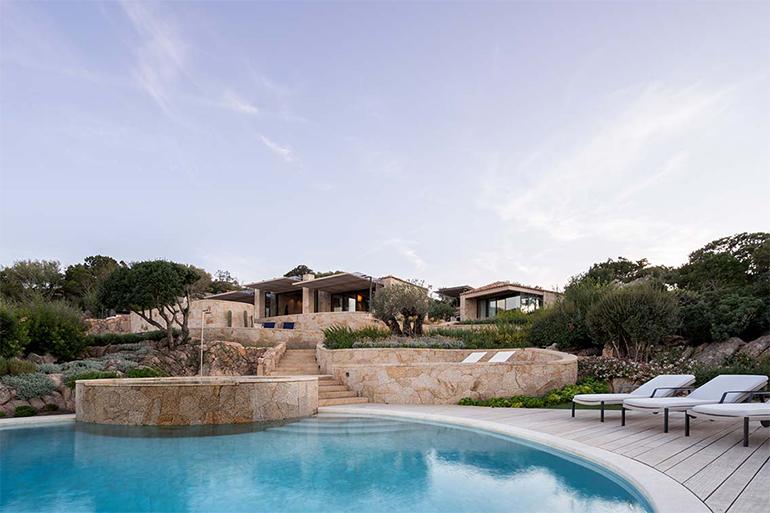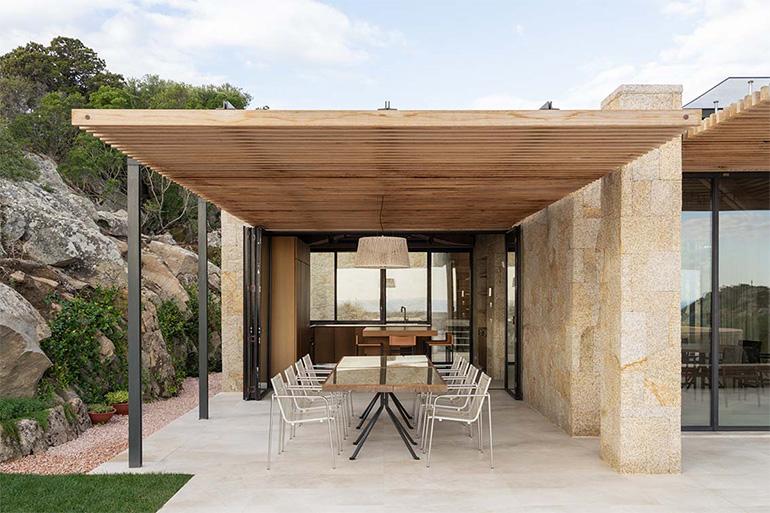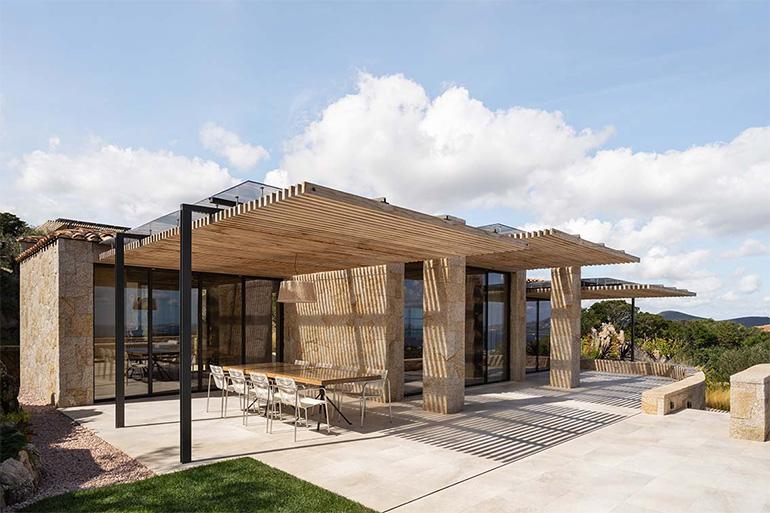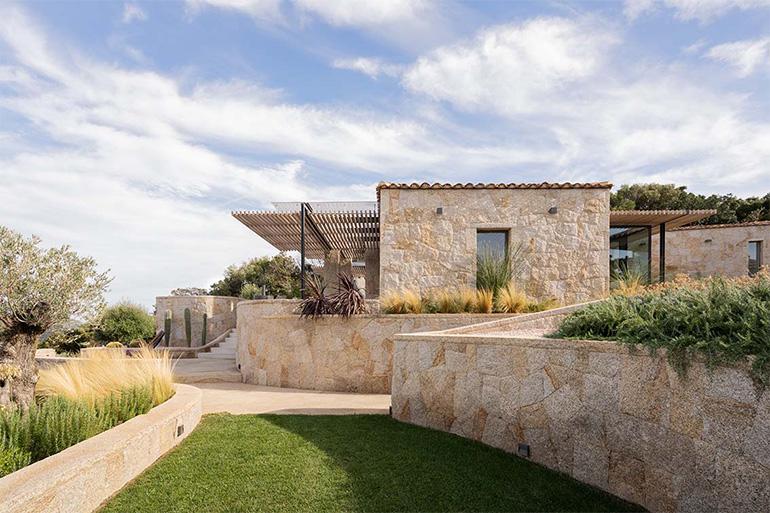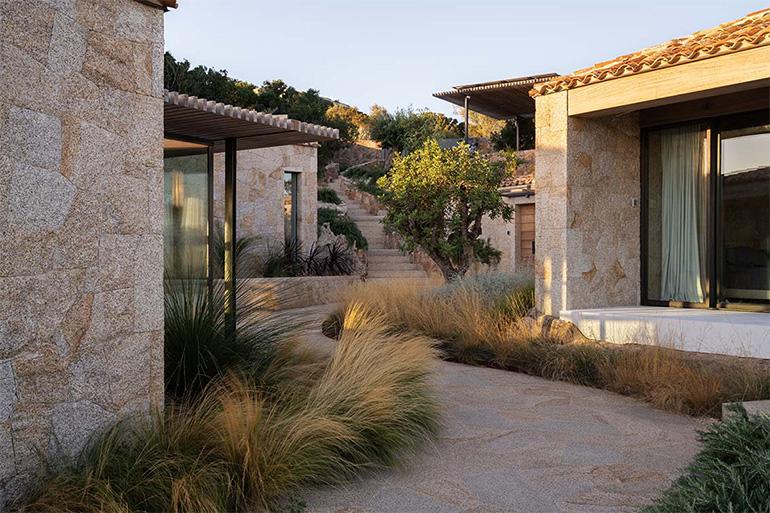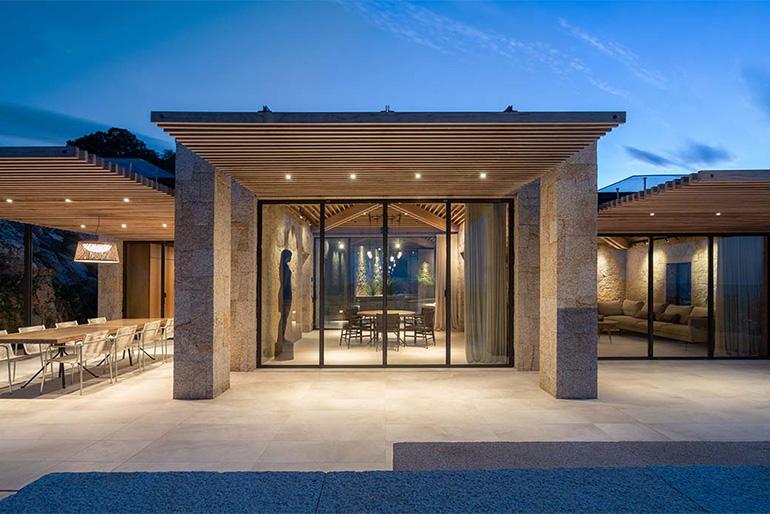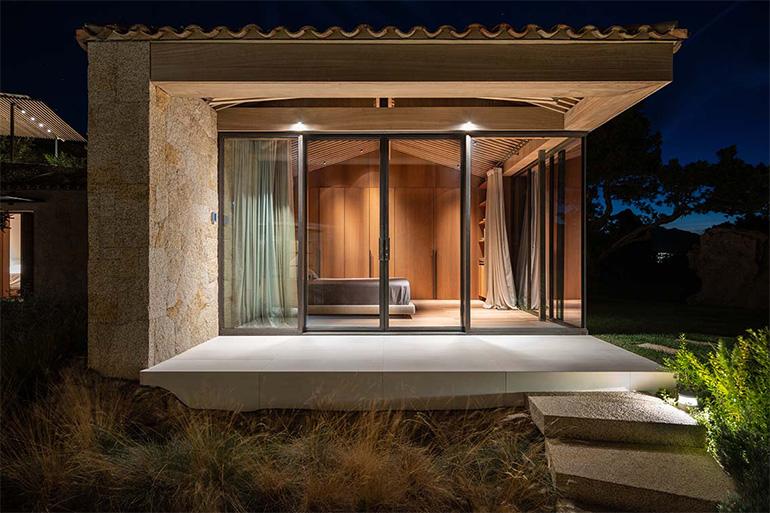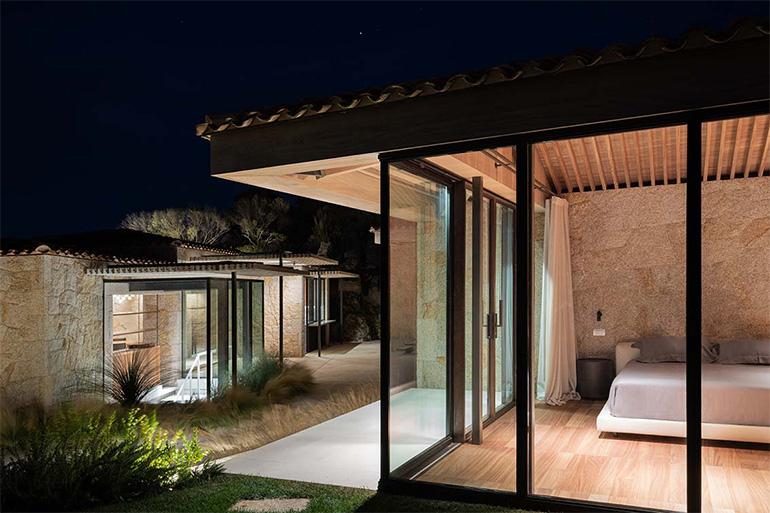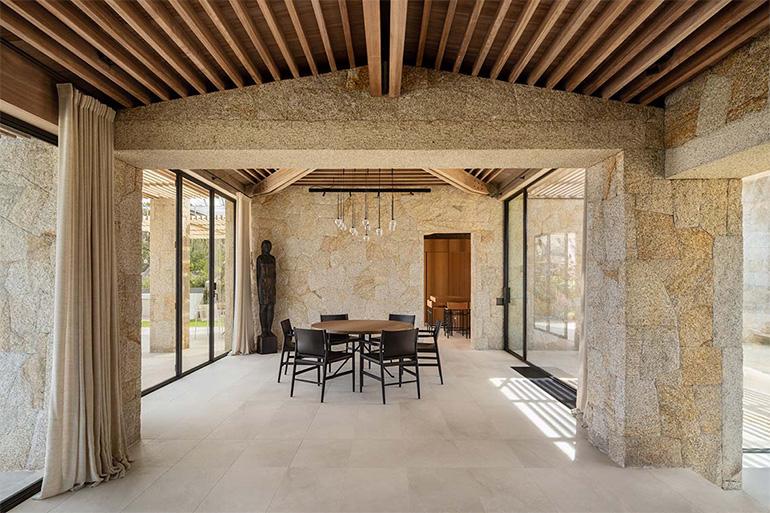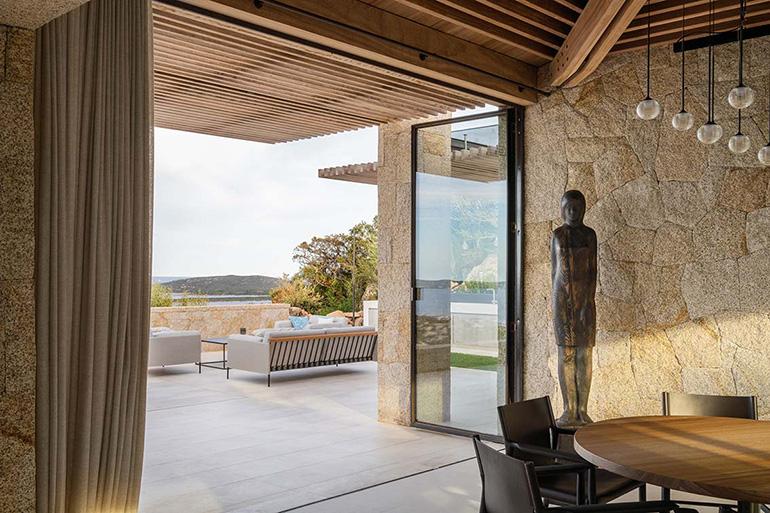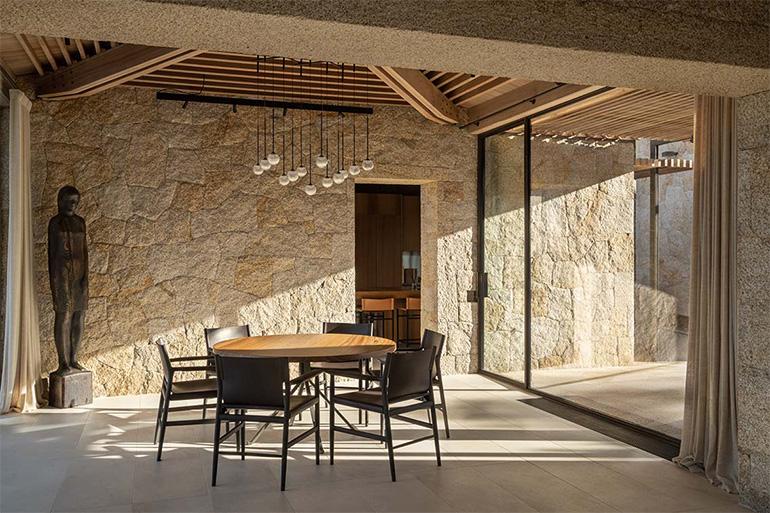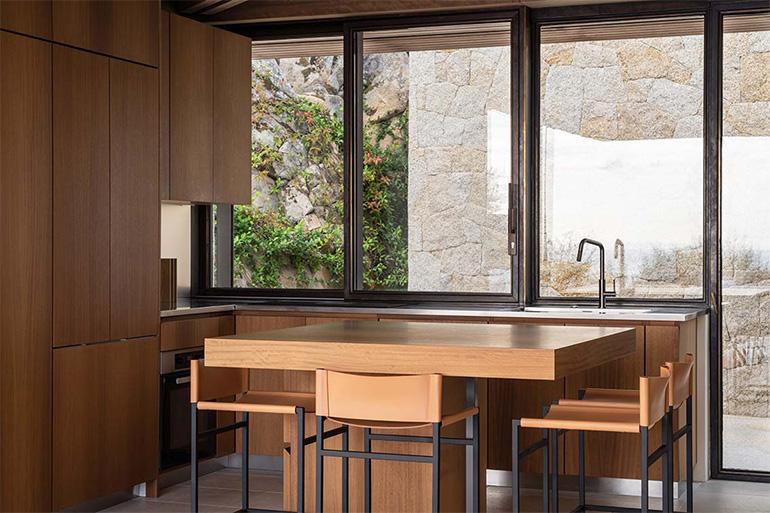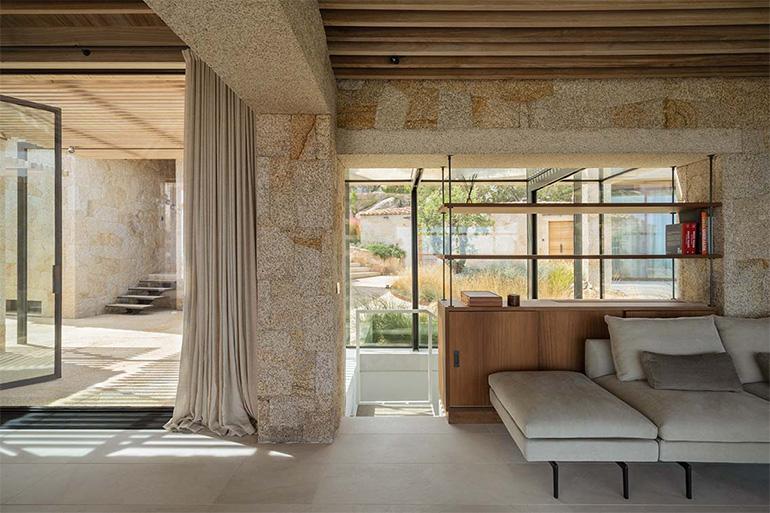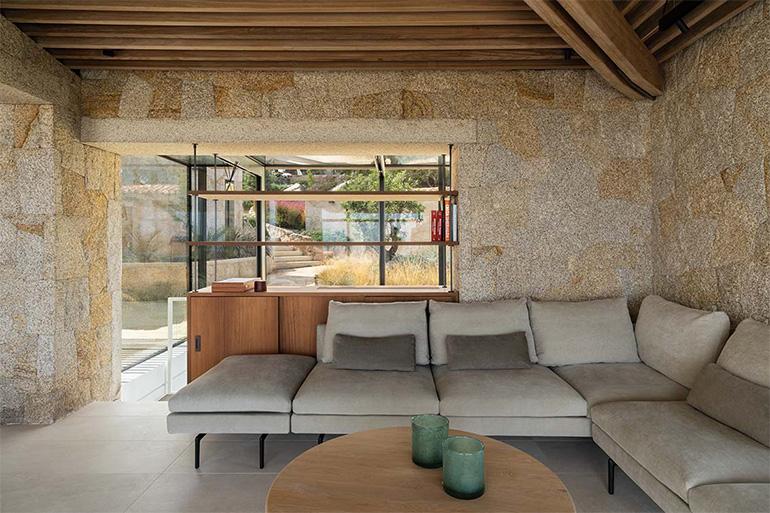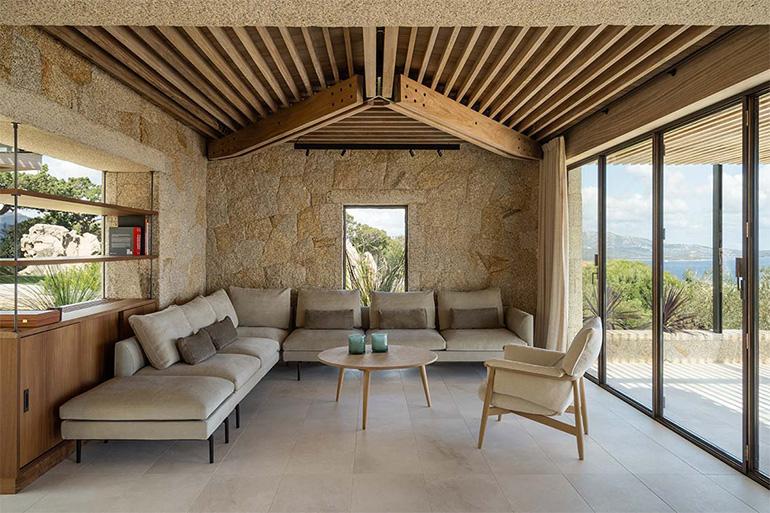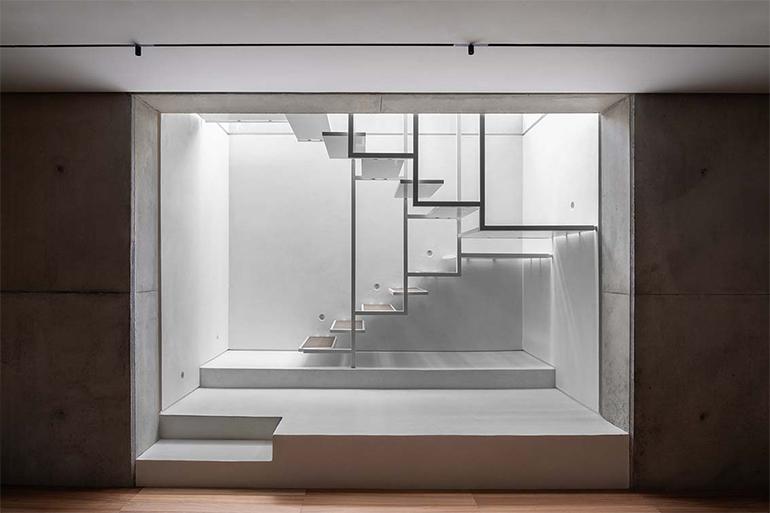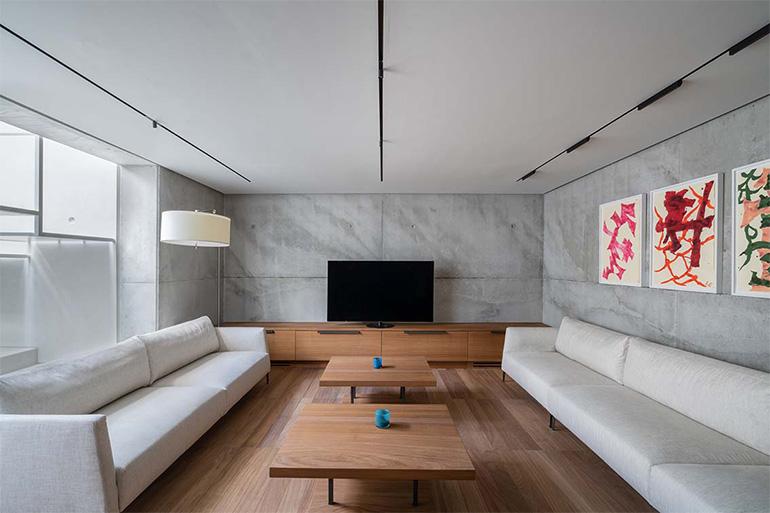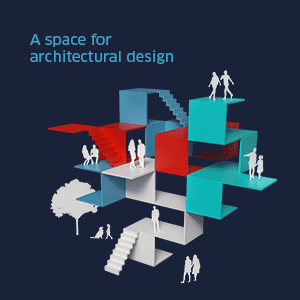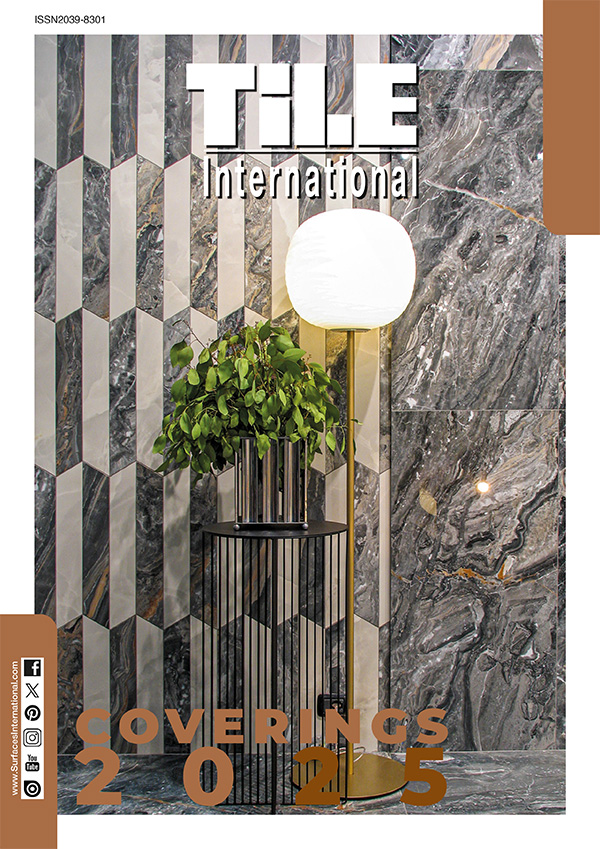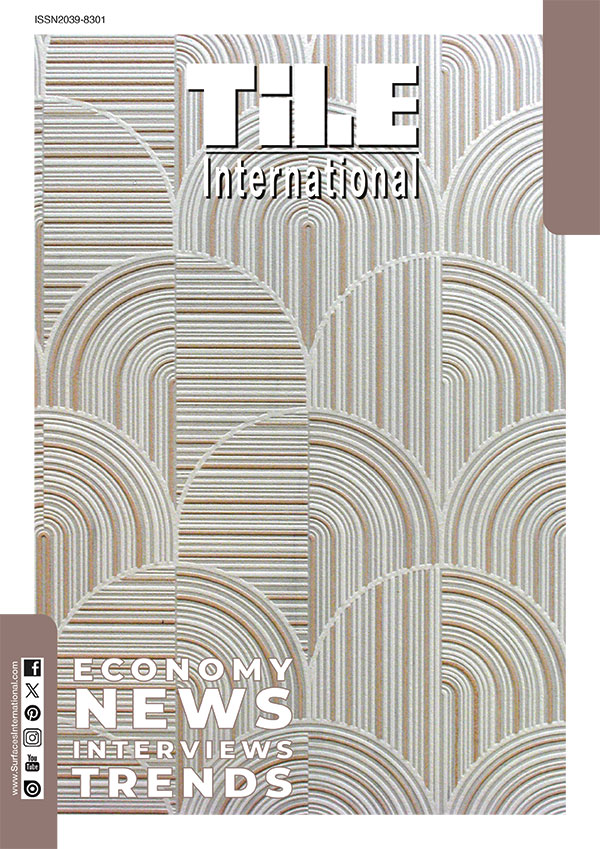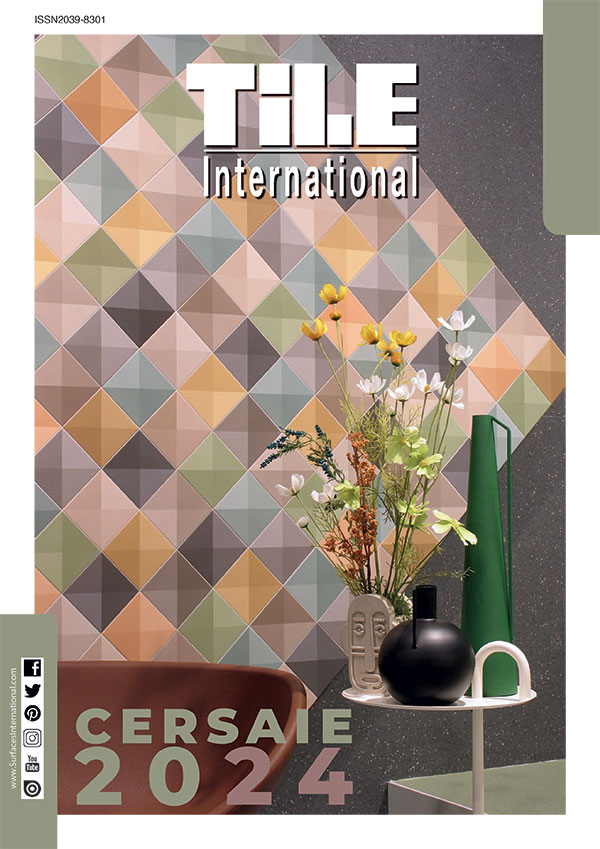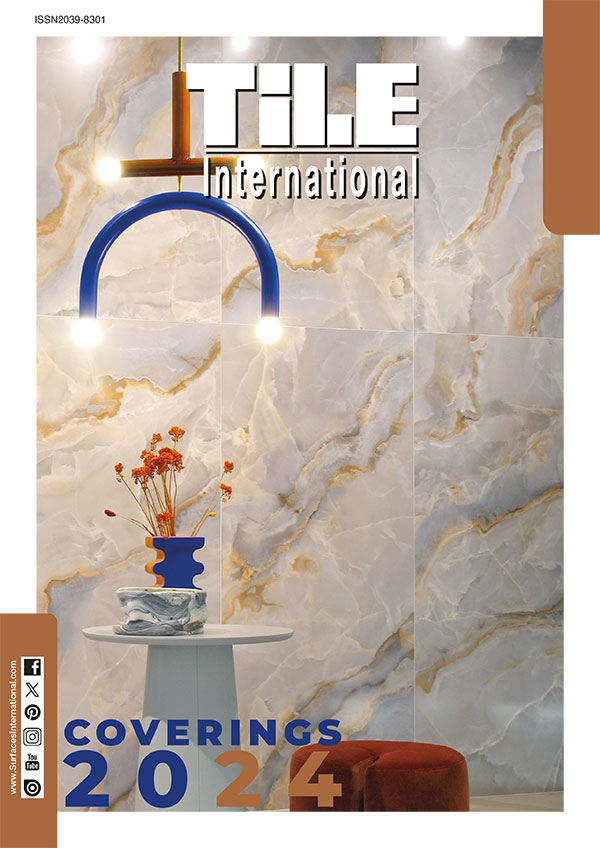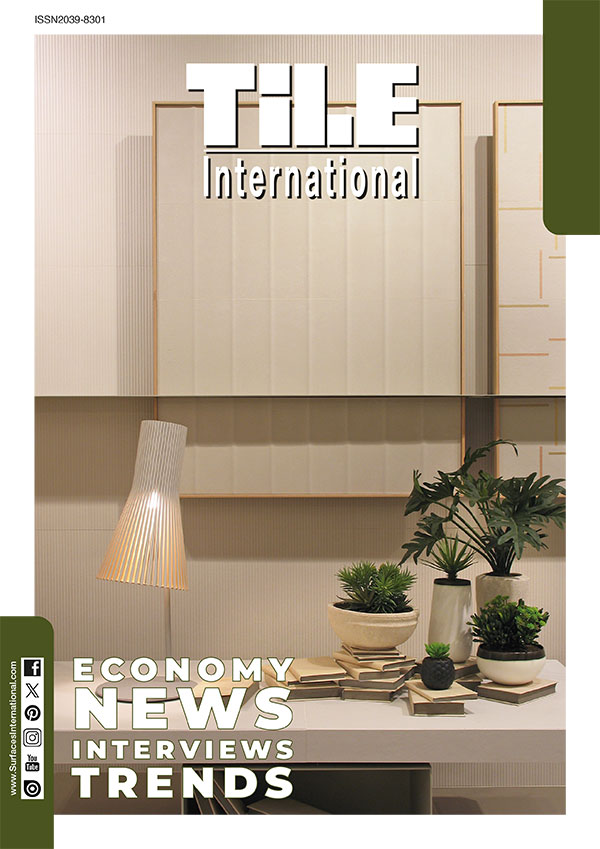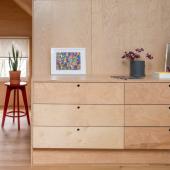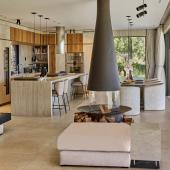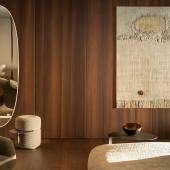In Porto Rotondo, Alvisi Kirimoto complete Villa S
In Porto Rotondo, one of the most exclusive destinations in Sardinia, in a silent area away from the spotlight, Alvisi Kirimoto presents Villa S — a winding residence overlooking the sea, with a breathtaking view of the Golfo degli Aranci.
Surrounded by Mediterranean bush and nestled in the hilly landscape of Gallura, the villa gently extends over a sloping two-hectare plot. A welcoming home, offering a spatial and tactile experience in which architecture, nature, tradition, and craftsmanship fuse:
“When we went to visit the site with the client for the first time, we were struck by the light, by the beauty of the granite boulders that stand out impressively against the landscape, opposing the line of the sea. We met in the open space among the existing ruins, and it occurred to us that the project should start from there, from the design of the square and natural paths that follow the morphology of the place, with small terraces that welcome the greenery and the water. The buildings have been restored, emptying them, and integrating them with the landscape, to free up the views towards the sea. More than finished structures, they constitute shelters from the sun and rain, just like the extraordinary Sardinian prehistoric buildings. The exceptional nature of the project also arises from the dialog with local artisans, specialized artists who have been able to give life and richness to the local granite, making it the true protagonist of the project.” — explain the studio’s founders Massimo Alvisi and Junko Kirimoto.
Photography: Marco Cappelletti
Initially, the lot was invaded by abundant vegetation, with fragmented internal paths leading to various disconnected buildings. Right from the start, the studio faced huge landscaping constraints, including the impossibility of modifying the shape of the existing volumes. The need emerged to rethink the relationship between them, creating a logical sequence of open, closed, and covered spaces.
From the highest point of the lot, a yellow San Giacomo granite staircase winds in a kind of architectural promenade up to the central square, around which the volumes gather: like a village square, it becomes a place for meeting and sharing. Three green tongues embrace the buildings and divide the square, while a carob tree in the center offers shade and coolness.
The villa is divided into three separate buildings at different levels, and a basement. Having to keep the profiles unchanged, the interiors and their relationship with the outside were reinterpreted through the addition of some contemporary elements, such as the new pergolas and the glass box, which leads to the basement.
The main volume, which houses the living room, dining room, and kitchen, was originally a space made up of three closed boxes. It has been redesigned as a unicum, whose structural pace is dictated by four parallel walls oriented in an east-west direction, alternating with large glass surfaces that open new views of the square and the terrace overlooking the sea.
To emphasize the continuity between inside and outside, granite is also used in the interiors. The innovative laying of the natural split stone blocks without joints, entrusted to skilled local craftsmen, transforms the walls into imposing and sophisticated surfaces. Contrasting with the gravity of the walls, the generous windows give dynamism and lightness to the elevations, reveling in the light of the sun's rays.
The fixtures of the east façade are burnished brass folding window frames with an extremely small section, to allow the interiors to expand towards the sea. The use of Orosei marble flooring, both inside and out, dissolves the concept of threshold.
Blending tradition and technology, the four-pitch wooden ceilings have a particular structure, formed by four Duo beams in Iroko wood, with central and lateral nodes resolved with a metal element. A substructure in wooden slats and a plank in Iroko wood, with their porosity, improve the acoustic performance of the interiors.
Outside, the tiled roofs have been restored to preserve the traditional charm of the original buildings. In continuity with the internal ceilings, pergolas with wooden slats and a metal structure extend on both main sides of the volume, creating shaded and sheltered spaces, which create a gentle gradation between inside and outside.
Photography: Marco Cappelletti
The terrace, bordered by curved walls of different heights according to the view to be beheld, echoes the granite of the interiors. A custom-designed kitchen with wood-burning oven and marble worktop, positioned on the right side of the terrace, allows you to enjoy the summer breeze during outdoor lunches and dinners.
The other two volumes house the bedrooms and utility areas. Here, greater intimacy is sought, so the openings are concentrated in the elevations opposite the square, and overlook private gardens between the buildings and the vegetation-covered natural stone wall.
The entrance to these spaces, set back from the façade, is further protected by the cantilevered roof and metal pergolas. The external stone walls and Iroko wooden roofs are aligned with the main volume, while inside, the walls are clad in natural lime plaster in a shade reminiscent of granite, and the floor is in Iroko parquet, for a warmer and more welcoming effect. The master bedroom differs from the others not only in its larger size and higher ceiling, but also in the materials: inside, a stone wall and a corner with large glass surfaces to the east, with a view of the sea and the garden, are more reminiscent of the main building.
In the west elevation of the living room, oriented towards the central square, the stair box stands out, which leads to the basement. As above, so below: a light and transparent glass volume, with its equivalent dug into the ground and a white metal staircase suspended in space, illuminates the playroom like a well of light. An environment with a unique atmosphere, surrounded by light-exposed concrete walls, a white false ceiling that reflects natural light and an Iroko parquet floor that delivers warmth. It represents a more meditative space with dry and essential lines, to retire to after enjoying the exuberance of the external landscape.
From here, we can continue through an ancient restored wooden door to the custom-designed cellar, or, by crossing a pivoting glass door and a corridor intended for displaying artworks, reach an external terrace from which you can access the last suite of the complex.
The basement is also home to utilities areas, various warehouses and the technical room, the functional core of the villa. Thanks to the latest generation of home automation, the radiant floor heating, the air conditioning with integrated fan coils and the lighting are automatically adjusted to offer optimal comfort in each room.
From the central square, a winding path branches off towards the sea, defining a system of terraces that echo the level curves and morphology of the site. Spaces for socialization and relaxation alternate, leading to the swimming pools, one of which is an infinity pool, while the other is fitted with a hydromassage, whose organic design evokes a flower. The exteriors, with their soft and sinuous lines, offer a lively counterpoint to the square and regular architectural buildings.
The narrative thread of the project is the large garden that surrounds and embraces the villa. The existing recovered trees are flanked by native Mediterranean vegetation that requires little maintenance and reduced water consumption. In the flowerbeds, plants that bloom throughout different seasons color the garden all year round, together with some strategically positioned trees, such as the secular olive tree with its three trunks above the swimming pool, the fig tree in front of the master bedroom, or the carob tree that stands proud in the square.
The result is a living house that breathes, as if it were part of the Mediterranean bush that surrounds it. Alvisi Kirimoto creates a project that is faithful to the spirit of the place, but nevertheless, surprising: respectful of the context, Villa S actively dialogs with the landscape, demonstrating how two entirely different worlds, architectural and natural, can become utterly complementary.
Drone aerial photography: Mattia Caprara e Flavio Pescatori

